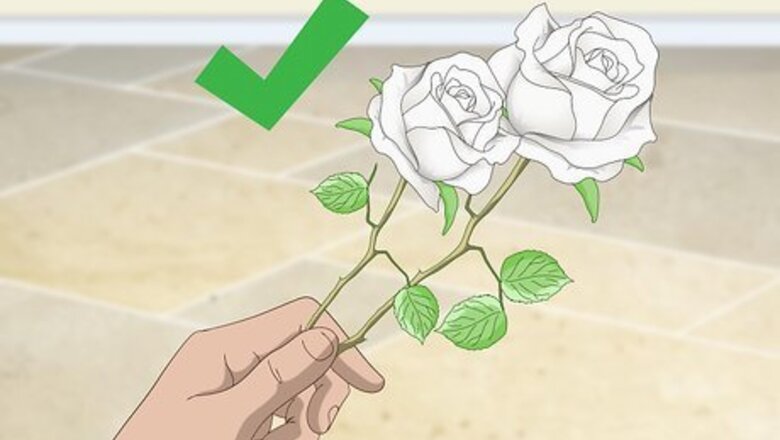
views
Dyeing Single-Color Roses
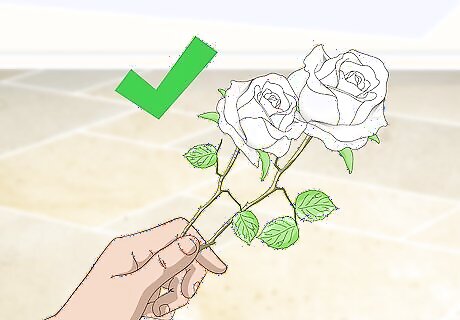
Purchase some white roses. Dye will show up the best on white roses. If you use colored roses, the dye will add to whatever color is already there. For example, if you try to dye a yellow rose blue, you will get green.
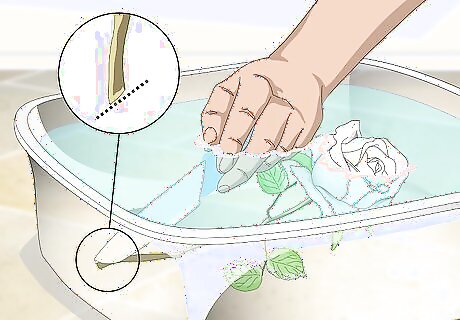
Cut the stem at a 45 degree angle with shears or a sharp knife. Hold the stem under water as you cut it down to 10 to 12 inches (25.4 to 30.5 centimeters). Cutting the stem at an angle will prevent it from sitting flat against the bottom of the cup. Cutting it under water will prevent air bubbles from forming. Both of these will help the rose absorb the dye better. Take this time to trim off any thorns and leaves as well. Cut the stems shorter if you want the roses to soak up the dye faster. This will also help the roses turn out brighter.
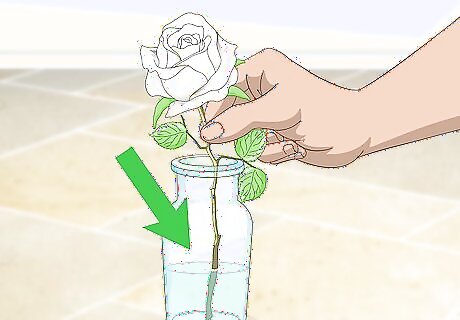
Place the rose in a vase filled with plain water. Leave the rose in the water as you prepare the dye bath. If you want to make a bouquet, you can cut more roses. Work one rose at a time, and place it into the vase as you finish cutting it.
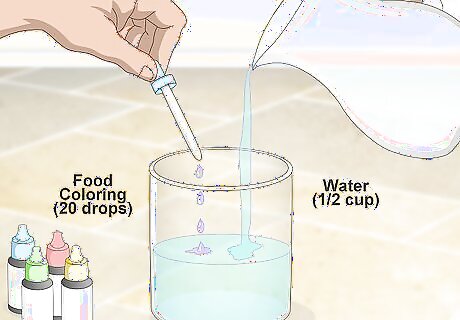
Prepare your dye bath. Fill a cup with ½ cup (120 milliliters) of warm water. Stir in 20 to 30 drops of food coloring or liquid watercolor. If you want something more subtle, use 5 to 10 drops and 1 cup (240 milliliters) of water instead.
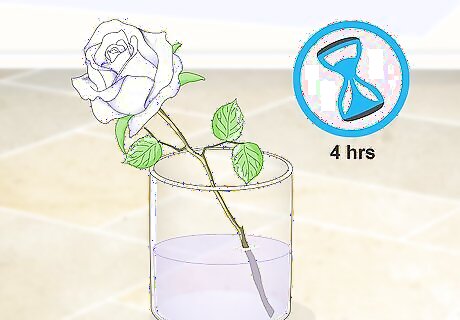
Set the rose into the water, then wait for it to change color. This will take at least 4 hours, so be patient! The longer you wait, the deeper the color will become. After 4 hours or so, the rose will take on a pastel color. If you want it to be a deeper color, you will have to wait 1 to 2 days. Keep in mind that the roses will be streaky and speckled. Rose petals will have small veins. They will look darker after you finish dyeing the rose. If this bothers you, leave the rose in the dye longer. For an interesting effect, dye the rose in one color for about 3 hours, then put it in a different color for 2 hours, then a third color for 1 hour.
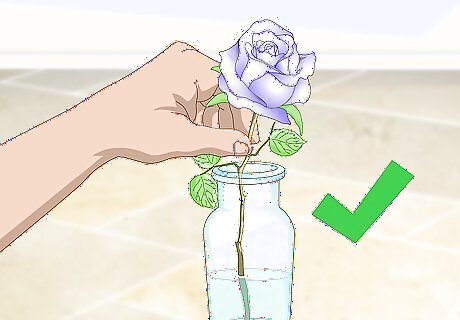
Place the rose into a vase filled with fresh water. Once the rose is the color you want it to be, take the rose out of the dye, and place it into a vase filled with fresh water. If you want to help the rose last longer, add some floral preservative into the water.
Dyeing Multi-Color Roses
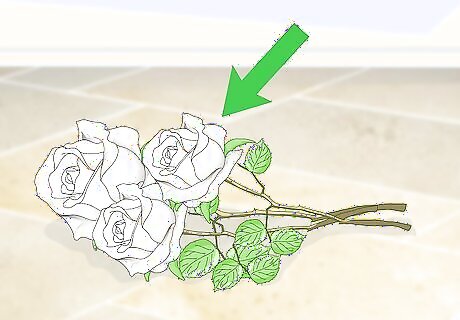
Buy some white roses. Dye only adds to what color is already there; it does not replace color. If you want the dye to come out true to its color, you should use white roses.
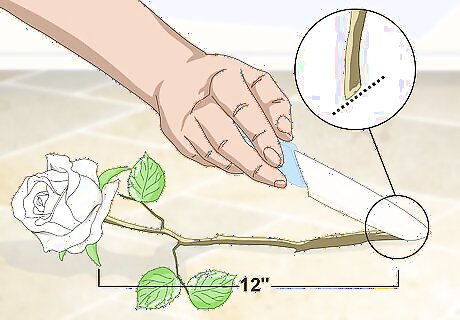
Cut the stem down at an angle. Use a sharp knife to cut the stem down until they are 10 to 12 inches (25.4 to 30.5 centimeters) long. Make sure that the bottom is cut at a slight angle. Take this time to trim off any leaves, thorns, and buds as well.
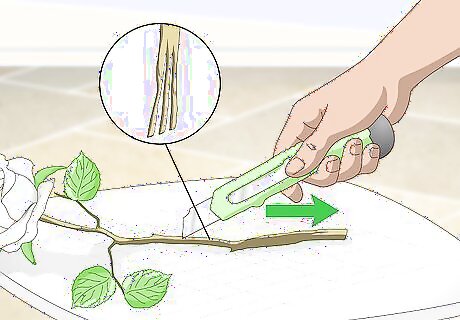
Split the stem halfway. Set the rose down on a cutting board or cutting mat. Use a sharp craft blade to cut the stem in half lengthwise. Stop when you are halfway up the stem. If you are using shorter glasses, you can split the stems only 3 inches (7.6 centimeters). If your rose had a very thick stem to begin with, you can cut the stem into three or four sections instead. If you snap the stem by mistake, cut the entire stem down to 5 to 6 inches (12.7 to 15.2 centimeters), and dye it a single color.
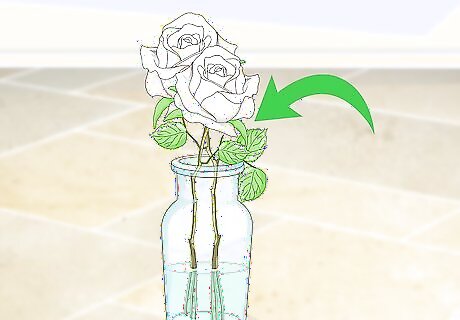
Place the rose into a vase filled with clear water. At this point, you can cut and split more roses, or move onto the next step.
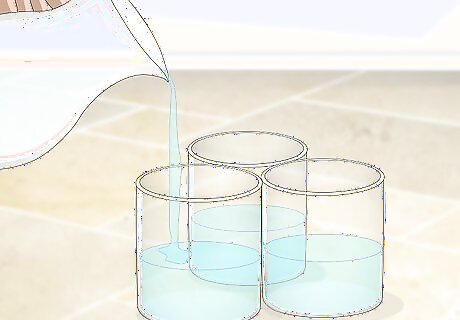
Fill 2 to 4 cups with warm water. You will need ½ cup (120 milliliters) of warm water. How many cups you use depends on how many sections you cut your rose stem into. You will need one cup per section. Use cups that have straight walls. Roses drink up warm water more quickly than cool water.
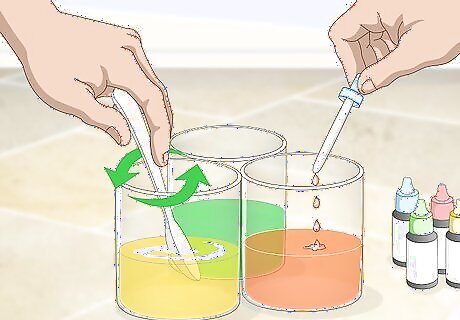
Stir your desired dyes into the cups. You will need 20 to 30 drops of food coloring for each cup. If you can't find food coloring, you can use liquid watercolor instead. Use a different color for each cup.
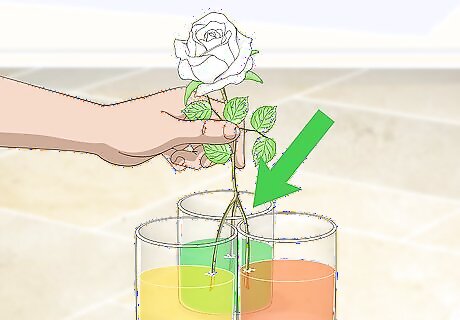
Place the split rose stem into the cups. Move the cups close together first, so that the rims are touching. Carefully spread apart the split rose stem. Place each section into a separate cup. Make sure that the stem is submerged in the dye as far as it will go.
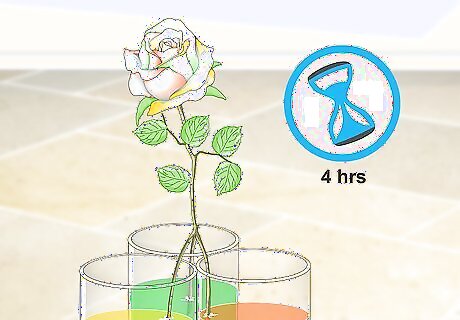
Wait for the rose to change colors. The longer you let the rose sit in the dye, the deeper the color will become. If you want a pastel color, wait at least 4 hours. If you want a deeper color, wait several days. These roses won't end up with each petal a different color. They will be dyed in sections, like a pie chart. Rose petals have veins in them, which will look darker. If you want them to be less visible, leave the rose in the water for twice the recommended time.
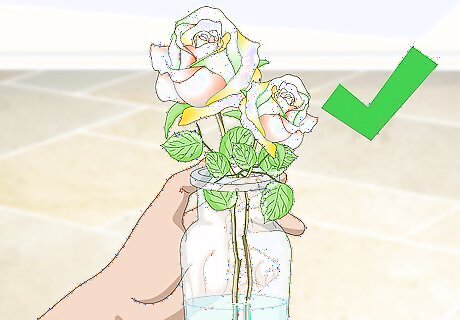
Transfer the rose to a vase filled with fresh water. If you want to, you can trim down the split end until the stem is whole again. To help you rose last even longer, still some floral preservative into the water first. Keep in mind, however, that some of the dye may leak back into the water and make it change color.
Dip-Dyeing Roses
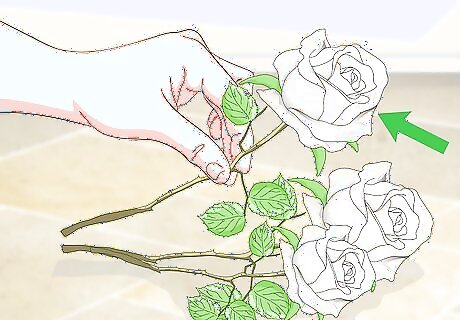
Choose a white rose. Dye only adds to the color that is already there. If you use a colored rose, the dye may end up a different color, or it may not show up at all. For best results, use a rose that is fully open. This method is suitable for both fresh and dried roses.
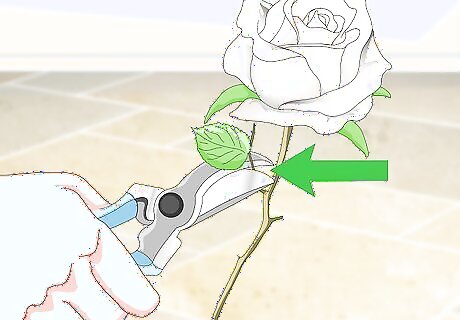
Trim the stem, leaves, and thorns. Use a sharp knife to cut the base of the stem off as an angle. Next, trim off any leaves, thorns, and buds. Place the rose into a vase filled with clear water while you prepare the dye in the next step. Hold the stem under water while you cut it. This will help prevent air bubbles, which can clog up the stem and prevent the rose from drinking.
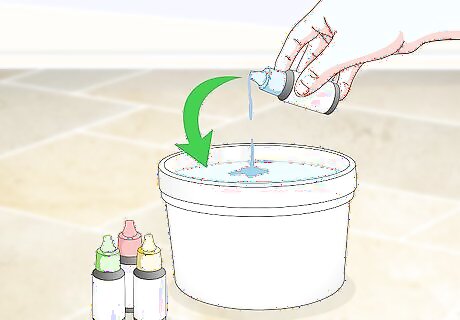
Prepare the dye bath in a bucket. How you prepare the dye depends on the type of dye you are using. Ink, food coloring, and fabric dye are all suitable options. If you can find floral dye, such as Dip It, you will get even better results. Choose your preferred dye, then prepare it in one of the following ways: Mix ink or food coloring into 1 gallon (3.8 liters) of water. Stir in 1 tablespoon (13 grams) of alum. Mix fabric dye in 1 gallon (3.8 liters) of water. Use enough dye to get the color you want. Prepare floral dye according to the instructions on the package.
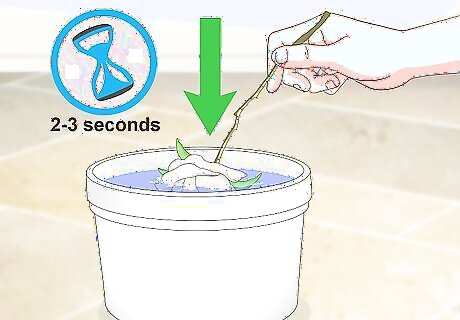
Dip the rose into the dye for 2 to 3 seconds. Hold the rose upside-down by the stem, then dip the flower part into the dye. Swirl it around so that every petal gets coated. You only need to leave it in the dye for about 2 to 3 seconds. This method is different from the typical dyeing methods. You are only dipping the flower part into the dye, not the stem
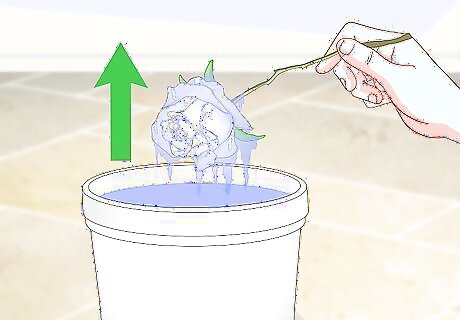
Lift the rose out. Hold it upside down over the bucket so that the excess dye can drip back. Give the rose a gentle shake, if you need to, but be careful not to get droplets of dye on anything that might get stained.
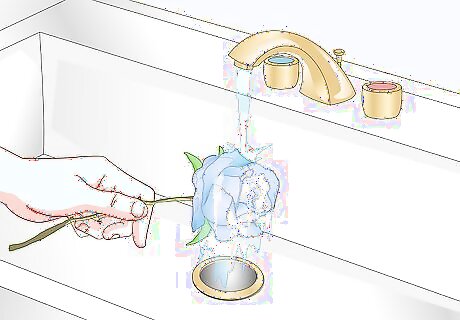
Rinse the rose under clear water. Give it another shake to get rid of any extra water. If the color comes out too dark, rinse it under water a little longer. Keep in mind that the color will lighten as the rose dries.
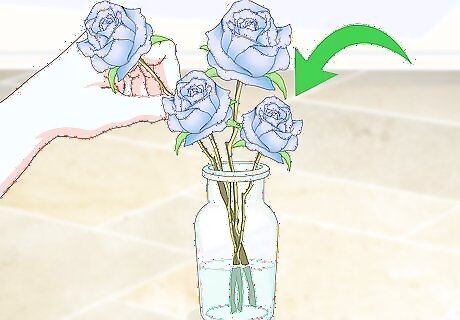
Set the rose into a vase so that it can dry. If the rose didn't turn out dark it enough, let it dry completely first, then repeat the dyeing process. While the rose dries, you can dye more roses, if you need to. Don't get impatient, however; if you use the rose while the dye is still wet, you will risk staining your skin, clothing, and other items in your arrangement. If you dyed a fresh rose, make sure that you fill the vase with water so that it doesn't wilt. Dried roses do not need water, however.
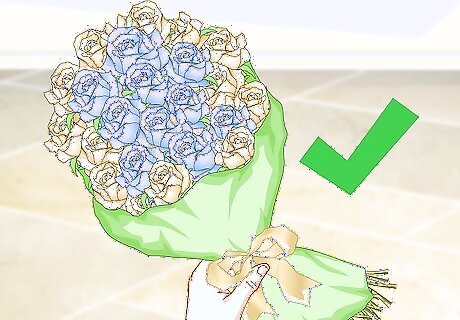
Use the rose(s) in your floral arrangement. If you are using fresh roses, be sure to add a packet of floral preservative into the water. This will help the roses last longer. Because you only dyed the flower part, you do not have to worry about the dye leaching back into the water. This means that you can use a clear vase without worrying about the water changing color.















Comments
0 comment